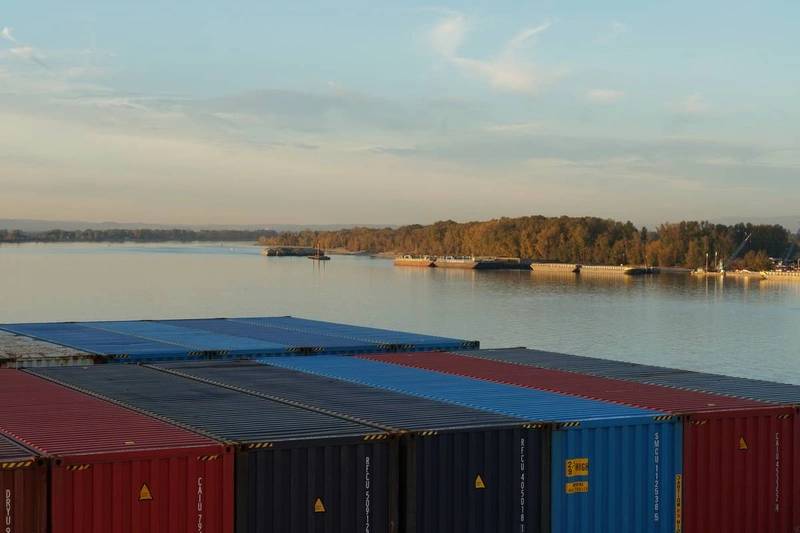Steps To Take Now For New Maritime Infrastructure Funding Opportunities
Much has been said both in Congress and by the current administration of the need to restore and enhance our nation’s transportation infrastructure, including its maritime transportation infrastructure. Recent legislation, such as the Infrastructure Investment and Jobs Act (IIJA, also known as the Bipartisan Infrastructure Law), the Inflation Reduction Act, the National Defense Authorization Act (NDAA) for fiscal year (FY) 2023, and the related appropriations acts, has shown that Congress is ready to provide substantial funding in support of these stated goals. The administration has responded with programs to put these funds to use in accomplishing these goals, along with furthering other policy objectives.
This increased funding has provided many opportunities for ports and terminals, both inland and coastal, not only for existing programs but also for new programs that this legislation has created.
Of principal interest to ports and other maritime facilities is the substantially increased funding provided by the IIJA for the Port Infrastructure Development Program (PIDP) that is administered by the US Department of Transportation (DOT) through its Maritime Administration, or MARAD. This program was originally created by the NDAA for FY 2010 to help ports obtain funds without the need to compete with highway, rail, and transit projects for grants under other discretionary grant programs such as INFRA and RAISE (formerly known as TIGER and later BUILD). But the PIDP had no funding until it received more than $200 million in each of FY 2019, FY 2020, and FY 2021.
With the IIJA, the funding for the PIDP was significantly increased to $450 million for five consecutive years beginning with FY 2022. The Consolidated Appropriations Act for FY 2022 added more than $230 million to this base amount for that fiscal year, and the Consolidated Appropriations Act for FY 2023 added more than $212 million to the base amount, providing a total of more than $662 million for the current fiscal year.
Within the PIDP grants, 25%, or more than $165 million, is reserved for so-called small projects in small ports. A “small port” is one that has handled an annual average of less than 8 million tons for each of the three previous calendar years, using data from the US Army Corps of Engineers. A “small project” is one with a total cost of not more than 10% of the total amount of the set-aside. An important advantage of grants made from this set-aside is that a cost-benefit analysis does not need to be done, which can be an expensive proposition. Instead, a more general showing can be made of the economic advantages of the project to the port or how the project will contribute to the movement of freight around and through the port.
MARAD issued a 74-page Notice of Funding Opportunity, or NOFO, under the PIDP for FY 2023 on February 9, 2023, which is available on MARAD’s website. Applications are due by 11:59 p.m. Eastern Time on April 28, 2023. The NOFO spells out in detail the requirements that applications need to meet, both as to content and format. The amount reserved for small projects at small ports is more than $165 million.
Eligible applicants for FY 2023 PIDP grants include a wide variety of public entities as described in the NOFO. With one of these entities as the lead entity, an application can also be made jointly with one or more private entities, such as the owners or operators of a facility or a collection of facilities at a port.
In addition to the increased funding for the PIDP, the INFRA and RAISE programs still remain available to ports and are also receiving increased funding. MARAD’s Marine Highway Program is being expanded in its scope and streamlined in its process under the NDAA for FY 2023.
Many ports have rail facilities or even operate short line railroads. Grants are available under the Consolidated Rail Infrastructure and Safety Improvements program administered by the Federal Railroad Administration (FRA) for these facilities and operations. The FRA has additional programs for which a port’s rail operations might make it a candidate, such as the Railroad Crossing Elimination Program created by the IIJA. Despite its name, the program supports not only the elimination of grade crossings, but improvements to grade crossings as well.
The IIJA and the Inflation Reduction Act created grant programs to address environmental concerns, many of which ports are eligible for. For example, a new grant program was created by the IIJA to reduce emissions from trucks idling at port facilities, which will be administered by the Federal Highway Administration in DOT, in consultation with the Department of Energy and the Environmental Protection Agency.
 © Lucia / Adobe Stock
© Lucia / Adobe Stock
Other programs for which ports and maritime facilities could be eligible can be found through the tools provided by the agencies that administer them. For example, DOT has posted on its website the anticipated dates that NOFOs will be published for key programs within the Inflation Reduction Act and when applications will be due. DOT also has a tool called the DOT Navigator that provides technical assistance, including a calendar of upcoming funding opportunities, a grant preparation checklist, and tools for identifying federal disadvantaged community areas, and identifies which programs offer flexibility as to the nonfederal match that is required. The FRA website has its own guidance to help project sponsors prepare for funding opportunities and successful grant applications.
The agencies frequently conduct webinars on their grant programs, which are usually recorded and available for viewing on their websites. There are at least three such webinars on MARAD’s website for PIDP applications for FY 2023. These are the folks who decide which applications are successful and which are not. One would do well to hear what they have to say.
An important step that can be taken even before identifying a potential federal grant program or preparing an application is to register with the System for Award Management (SAM) of the General Services Administration and obtain a Unique Entity ID, which is generated by SAM and used across the federal government. Registration with SAM is required to receive federal grants and contracts. Obtaining a Unique Entity ID is relatively straightforward, but approval of SAM registration can take two weeks or longer, so it should not be left to the last minute if an application is being submitted close to the deadline.
When a NOFO for a program of interest is issued, take the time to study it carefully. Make sure the project fits not only the statutory purposes of the program but also the other policy considerations that are specified in the NOFO. The grant programs are created by Congress but they are administered by agencies of the executive branch, so they can be expected to reflect the priorities of the current administration. For example, in the NOFO for PIDP for FY 2023, the selection criteria include not only the requirements of the statute that created the program, but also considerations related to climate change and sustainability, equity for underserved and disadvantaged communities, workforce development, job quality and wealth creation.
Follow closely the format and organization that the NOFO says an application should have, since this is the checklist the reviewer will be using in considering and evaluating the application. The increased funding for infrastructure projects is having the desired effect of attracting many applications. The easier the process of reviewing and evaluating an application can be made for whoever will be doing that, the more competitive that application will be.
Increased leveraging of federal funding to attract nonfederal sources of infrastructure investment can also make the difference between two otherwise comparable applications. For example, the nonfederal share of the total costs of an eligible PIDP project must be at least 20%, with possible waivers for projects in rural areas or small projects at small ports. However, the NOFO for FY 2023 provides that applications will be rated according to the nonfederal share of the project’s future eligible project costs and will be sorted according to quintiles, with projects in the 80th percentile and above receiving the highest rating, the 60th to 79th percentile the second-highest rating, and so on. This quintile approach means that an application having a cost-share percentage near the top of a lower quintile could receive a lower rating than an otherwise comparable application near the bottom of the quintile above it, even though their cost shares differ by only a few percentage points.
Finally, the aid of our elected representatives should not be overlooked. The members of Congress created these programs and are now funding them to a significant extent. They will want to see that the purposes of those programs are being carried out and that funding is being put to its intended use, especially for the benefit of their own constituents. Support for an application from members of Congress provides evidence to the administering agency that the project is considered by those members as having benefit to their larger constituency.














